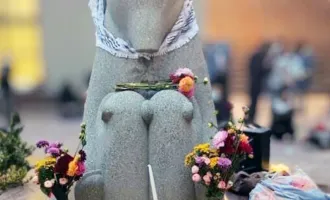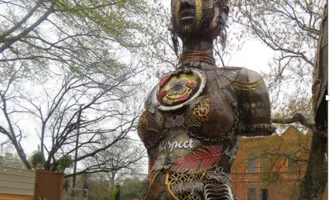
The Latrines
In 2019, I was camping in Death Valley and had the chance to explore the nearby base of Mount Whitney.
We noticed that a bit further on the map was the historical site of Manzanar, one of the places where Japanese-American internment took place during World War II. When we arrived, the site was gloomy and fairly empty, with a museum that echoed with recordings of voices playing on loop.
The museum was surrounded by several preserved buildings, including bathroom buildings. One of the interned women was quoted as saying that the lack of privacy even in the bathrooms, with no stalls or dividers, was one of the hardest parts of internment for her.
The Manzanar “relocation site” was located far from any major towns or cities, like most of the internment camps. Around 11,000 people were interned here, of 120,000 interned across the country. Summers in the region can be as hot as 110°F, and below freezing during winter. While I was there, it began to snow.
To keep their spirits up, interned people planned games of baseball when they weren’t working around the camp. This seems so quintessentially American for the time, as if they had started cooking apple pies.
Internment lasted about three years, when the war ended. After release, people were not entitled to have their homes or property back. It felt strange visiting one of the dark parts of American history that is not entirely edited out of the K-12 curriculum.
One of my great-grandfathers served in the Japanese army during WWII, and one served in the US forces.
Though I had read about Japanese internment in history books, it seemed much more real to be standing there shivering in the icy wind.



